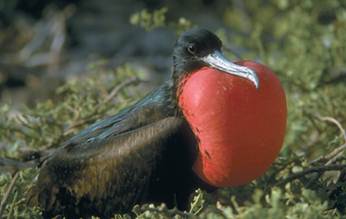


 النبات
النبات
 الحيوان
الحيوان
 الأحياء المجهرية
الأحياء المجهرية
 علم الأمراض
علم الأمراض
 التقانة الإحيائية
التقانة الإحيائية
 التقنية الحيوية المكروبية
التقنية الحيوية المكروبية
 التقنية الحياتية النانوية
التقنية الحياتية النانوية
 علم الأجنة
علم الأجنة
 الأحياء الجزيئي
الأحياء الجزيئي
 علم وظائف الأعضاء
علم وظائف الأعضاء
 الغدد
الغدد
 المضادات الحيوية
المضادات الحيوية|
Read More
Date: 20-10-2015
Date: 14-10-2015
Date: 14-10-2015
|
Mating Systems
Mating systems are descriptions of who mates with whom in the animal world. In simplest terms, definitions of mating systems are based on how many mates an individual acquires during the breeding season. In monogamy, both males and females have only one mate at a time. This type of mating system often occurs in species in which both the male and female are required to successfully raise young or in which males have little chance of monopolizing more than one female. Monogamy is common in birds whose males can help incubate eggs and feed young.
In a polygamous mating system, individuals of one or the other sex have more than one mate during the breeding season. When males in the population mate with more than one female, it is called polygyny (poly means “many,” and gyne means “female”). Males compete for females, and this leads to strong selection for traits that either attract females (for example, elaborate songs or calls, bright coloration, and courtship displays) or allow males to compete effectively with other males (for example, aggressiveness, large size, and fighting aids such as antlers). Polygyny is common in species where males are less likely to provide parental care (and thus may increase their reproductive success by inseminating more females) or where males are able to monopolize more than one female (if females or the resources they require are spatially clumped). Mammalian mating systems are predominantly polygynous, in part because young develop within and are then nursed by the female.

A male frigate bird with its throat pouch inflated to attract females.
In polyandry (andros means “male”), some females mate with more than one male during the breeding season. This is the rarest type of mating system. Females compete for males and may be larger and more colorful than males. In the spotted sandpiper, for example, females compete for territories in order to attract males. Once male mates with a female, she lays a clutch of eggs that the male incubates. The female will then attempt to attract additional males for whom she will also lay eggs.
In addition to the number of mates an individual acquires during the breeding season, mating systems have also been described in terms of whether a pair bond is formed, how long the pair bond lasts, and how much each member of the pair contributes to care of the young, resulting in more complex definitions. Mating systems are also complicated by the fact that individuals of some species perform extra-pair copulations, which are copulations with individuals other than the mate. Evidence from deoxyribonucleic acid (DNA) studies of birds, mammals, and other species has shown that extra-pair copulations can result in fertilized eggs so that a presumably “monogamous” male or female may in fact have more than one mate.
Which mating system evolves is influenced by the relative parental investment of each sex and the ability of one sex to monopolize members of the opposite sex, which in turn may be driven by the abundance and distribution of resources such as food or nesting sites. Because resources vary among and within habitats, this leads to variation in mating systems, even within species. An excellent example of this is the mating system of the dun- nock, a European songbird. The amount of food available affects the size of the area over which a female must forage, and this in turn affects how many females can be monopolized by one male and how many males can be attracted by a female. Within a single population of dunnocks, there may be monogamous pairs as well as birds in polygynous and polyandrous relationships.
Because of differences in the amount of energy invested in producing gametes (eggs are costly, sperm are not), finding a mate, and rearing offspring, the costs and benefits of a particular mating system may be different for males and females. In addition, not all individuals of the same sex in a population experience the same costs and benefits of a particular mating system (for example, some males in a polygynous mating system may have several mates whereas other males may have none).
References
Davies, Nicholas B. Dunnock Behaviour and Social Evolution. Oxford: Oxford University Press, 1992.
Emlen, Stephen T., and Lewis W. Oring. “Ecology, Sexual Selection, and the Evolution of Mating Systems.” Science 197 (1977): 215-223.
Westneat, David F., Paul W. Sherman, and Martin L. Morton. “The Ecology and Evolution of Extra-Pair Copulations in Birds.” Current Ornithology 7 (1990): 330-369..



|
|
|
|
دراسة تحدد أفضل 4 وجبات صحية.. وأخطرها
|
|
|
|
|
|
|
جامعة الكفيل تحتفي بذكرى ولادة الإمام محمد الجواد (عليه السلام)
|
|
|